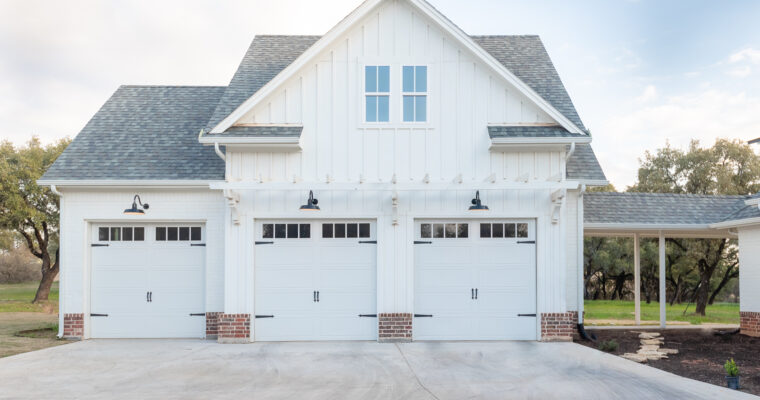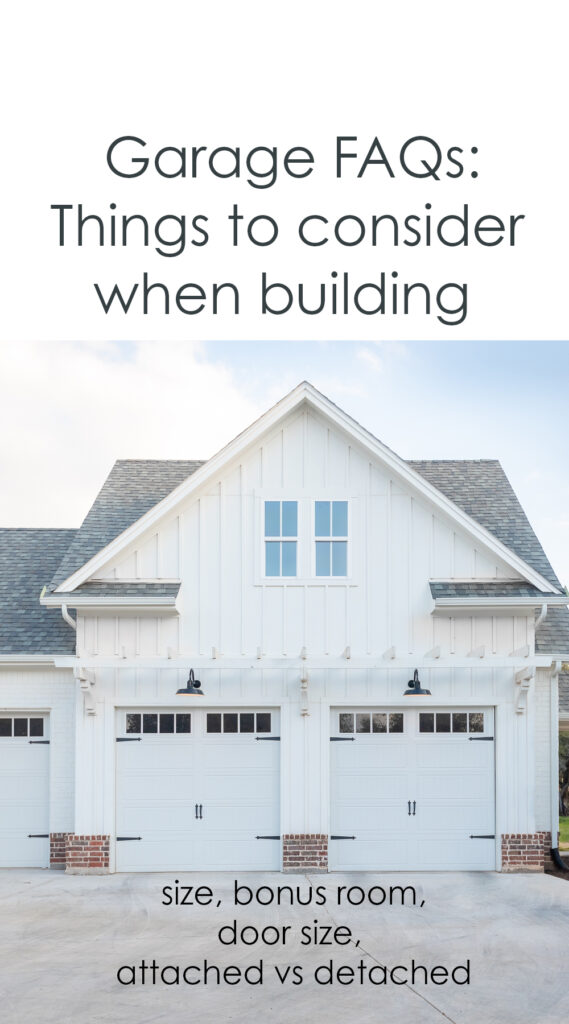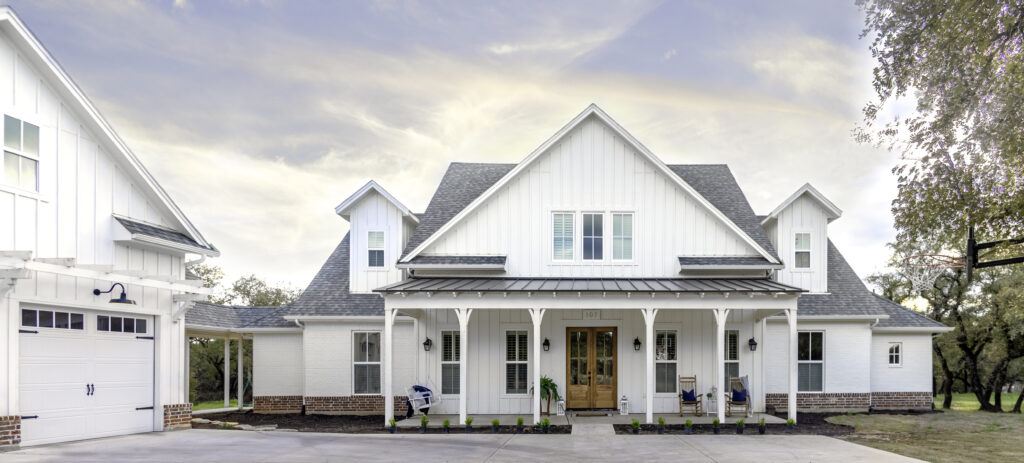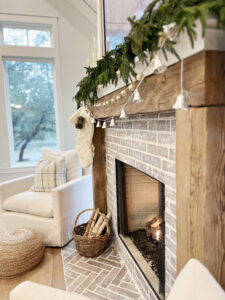
Garage FAQs: Everything you need to know about garages
In this article:
Attached vs Detached Pros and Cons



Attached garage vs detached garage:
I am often asked about our detached garage and why on the Century Oak floor plan we sell which is based on our own house, is the garage different and attached. (There is a detached version available as well). The answer to this question is that we thought more people would prefer an attached garage over a detached. However, we are finding it to be more evenly split. Here’s a few things to consider if you’re wondering if you should go with a detached or attached garage for your home build.
Detached garage pros/cons:
Pros:
- If you have a tricky lot (like we do) having the garage detached may help to make it all fit.
- This allows for your driveway to come in front of the house OR to the side depending on which side of the garage you place the doors.
- If you build a room above, this detached space is also great for isolating noise. My husband and son play instruments and this arrangement makes it so they can play without everyone in the house hearing.
- Additionally, the bonus space makes a great secluded home office, with fewer distractions and interruptions.
- If you need or want to build in phases, a detached garage is easier to add before or after the rest of the house.
Cons:
- You have to go outside to go to the garage, and therefore weather is an important consideration. If you live in an environment with lots of snow or rain, you may not want to have a detached garage.
- A detached garage is also slightly more expensive to build because you have more exterior walls/materials.And you’ll probably want to build a covered breezeway from the house to the garage.
Pros and cons of an attached garage
These are pretty much the inverse of the above, so these points are brief. If you want more clarification see the explanations above.
Pros:
A more integrated bonus room, better flow from main part of the house.
Don’t have to deal with weather to get to car
Less construction cost
Cons:
More noise heard in main house from the garage/Bonus Room
May require a wider lot/land


Sizing of Garage
Probably the most important consideration in deciding the size of your garage is the size of your vehicles.
If you have a big truck or SUV that you want to keep in the garage, measure the length, width and height and make sure there will be enough room to walk around 3 sides and open doors.
Allow 9-10′ of width per car, and 20-24′ of depth for circulation and storage.
Will you be storing other items like bicycles, lawn mower, tools, golf cart, RV in this garage or elsewhere? If it will be some or all of the above, you’ll need extra space and possibly an extra bay.

Size of garage doors
A typical garage door is 8′ wide by 7′ tall. Double width garage door are typically 16′ wide.
On my plans, they are typically 8′ tall and either 8′ or 16′ (double) wide. It’s a fairly quick adjustment to change the width of the garage doors if necessary.
For large SUVs and trucks, a 9′ or 10′ wide door may be a more comfortable fit. Or for an oversized double, you could go with 18′ wide.
To make our garage doors more attractive, I added these carriage style accents. They are magnetic and have big impact for a very small cost!


Bonus Room considerations
A room built into the “attic space” over the garage is often referred to as a Bonus Room. Because garages are so large, their roofs create quite a bit of potentially usable space below. If it’s framed right, this can be good additional square footage for your home.
TO BUILD OR NOT TO BUILD a Bonus Room
In my opinion, If you’re building from scratch, it makes sense to go ahead and have the space over the garage framed for a bonus room, whether you plan to finish it out right away or not.
You may change your mind later and decide that extra space would be good for your family.
Also, there’s no better way to increase your home’s value than additional square footage.
You’re already paying for the roof over this space, you might as well, have it framed for a live load* in the ceiling joists above the garage.
You’ll also have the space above framed to create a usable room. So instead of trusses and diagonal cross bracing everywhere, they would build a couple of vertical walls to support the roof and define a potential Bonus Room.
If the budget is tight, you can just have it framed for a Bonus Room and finish it later. This is what my husband and I did.
Most Bonus Rooms use the space down the center of the Garage roof where the most height is and have sloped ceilings down to a certain height, maybe 5′ or 6′ above the floor. Gables can provide some extra window light as well as headroom.
If the space will be used as a bedroom, make sure the windows meet egress requirements per code.
*Live load refers to the way a space will be used and therefore how much structure will be needed to support it. If framing just has to hold itself and a roof up (called dead load), the framing members could be smaller than if it was a LIVE LOAD and needed to support people, furniture, and other moving forces, etc.
I have a whole blog post about Bonus Rooms HERE.
NOTE: Because we knew we wanted a large multi-purpose room and storage over our garage, I added some extra height in the design and a large gable for additional usable area.

I hope you found this helpful!
I look forward to connecting with you in the comments or on Instagram!
